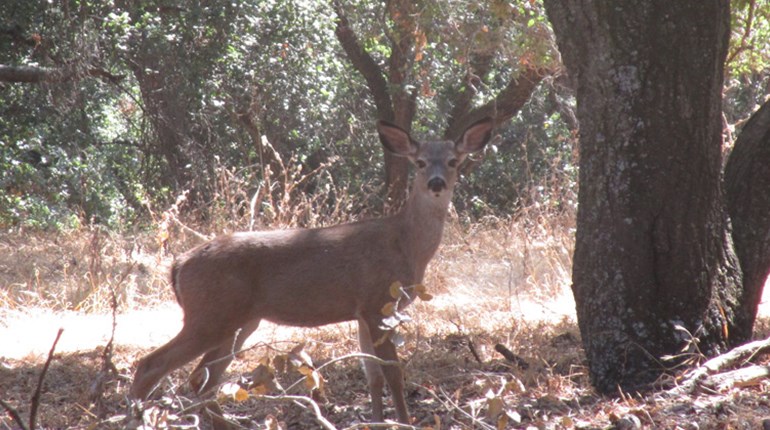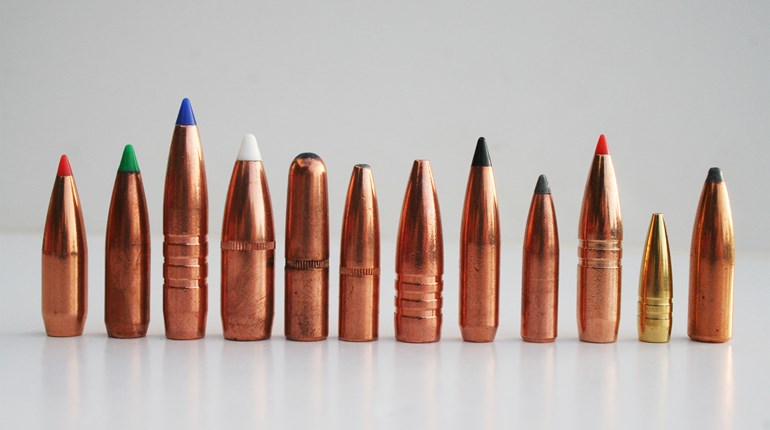Where would hunting be without whitetail deer? Hunting in North America has never depended so much on one species to sustain its heritage, participation levels, and the archery and firearm industries.
That fact arose continually in March when the Quality Deer Management Association (QDMA) held the 2014 North American Whitetail Summit near Branson, Mo. Although the summit's purpose was to address whitetails and issues affecting them, their fate was repeatedly linked to hunting's future.
Among those attending the summit was Will Primos, founder of Primos Game Calls. Primos said conservation efforts the past 80-plus years usually focused on species facing grave threats caused by habitat losses. In contrast, whitetails adapted so readily to many of those habitat changes that it's been easy to take them for granted.
"People haven't put a real conservation value on whitetails because there's been so many of them the past few decades," Primos said. "But now we're seeing areas where all those whitetails changed their habitat. Now they're facing disease issues, they have more mouths to feed than some habitats can support and, in some cases, there aren't as many deer as people want."
Until this summit, however, no one gathered to discuss whitetails and their future. Kip Adams, the QDMA's director of education and outreach, said people must realize whitetails are the No. 1 big-game animal for 37 of 50 states. To visualize those states, stand in the far northwestern corner of North Dakota and drop a line straight south to the western side of the Texas Panhandle. Everything east of that line is "Whitetail Country."
Even so, a recent QDMA survey found less than half of those 37 states—18—have a published management plan for their whitetail herds. In Canada, only one of five whitetail provinces, Quebec, has a deer plan.
Brian Murphy, the QDMA's CEO, said the summit was a call to action for hunters, wildlife biologists, university researchers, agency leaders and hunting-gear manufacturers. While planning the summit in 2012-13, the QDMA realized it had to attract key decision makers and stakeholders from across whitetail country.
"We can't solve 40 years of accumulated issues in one meeting, but this was a first step," Murphy said. "We had to take our best shot, and we exceeded our expectations."
Murphy said the summit achieved its purpose of determining priority issues, but participants wanted to keep that momentum going. "We evaluated how the different representatives ranked the challenges, and we followed up to see which ones we must pursue," he said.
The QDMA didn't take long to make those decisions. In early June it announced the creation of the National Deer Alliance (NDA), and named longtime archery-industry official Craig Dougherty as its executive director.
The NDA's mission statement declares that it serves "as the unified voice of deer hunters and guardian of North America's wild deer, wildlife habitat and our hunting heritage. NDA fuels the passion for deer hunting and conservation through engagement, fellowship and education."
The NDA's first conference is scheduled for May 6-8, 2015, at the Galt House in Louisville, Ky. The NDA's mission to be the umbrella group for all deer hunters is receiving nationwide support. In addition to the QDMA, the NDA also has forged partnerships with Whitetails Unlimited and the Mule Deer Foundation.
Dougherty said the three deer organizations will remain independent, but explore ways to work together on behalf of their combined memberships, which exceed 200,000 hunters.
"[The three organizations] have participated in hundreds of projects and partnerships with state and federal wildlife agencies, and they've received numerous conservation awards and honors. They now represent the largest (and loudest) unified voice for deer in the world," Dougherty said.
The NDA wouldn't have been conceived, of course, if the QDMA Summit hadn't been so productive. Even though a late-winter storm kept 50 of 270 invited participants from reaching Branson, the summit still drew a high-profile crowd.
That crowd included Dan Ashe, director of the U.S. Fish and Wildlife Service; Dan Forster, director of Georgia's Wildlife Resources Division and president of the Association of Fish & Wildlife Agencies; top-ranking officials from 18 state wildlife agencies; research scientists from nine universities; deer hunters from 20 states and one Canadian province; and representatives from 19 companies, 17 landowner groups and 13 hunting/conservation organizations.
Jay McAninch, president/CEO of the Archery Trade Association, considered the summit a landmark meeting. "Whitetails touch people's lives in many ways, whether they're hunters, farmers, foresters, gardeners or motorists," McAninch said. "And for the archery/bowhunting industry, they've been our No. 1 economic asset since the 1970s. They're also part of our food chain, they have impacts on other species, they're overrunning some suburbs, and they're now at the center of significant disease research, some of which has human-health implications."
The summit featured information-rich sessions on hunting participation, trends in deer-herds, hunter recruitment/retention efforts, and rising disease and predator threats to whitetails. Participants also worked in groups to identify and rank the most pressing issues and challenges to whitetails and deer hunting. Their top 10 list included these items:
1. Hunter recruitment and retention
2. Education and outreach for hunters
3. Access to hunting land
4. Political influences on hunting, deer management
5. Captive-deer industry
6. Deer diseases
7. Public concerns about deer numbers
8. Habitat loss/landscape changes
9. Connecting hunters to scientific information
10. Impacts of predators, feral hogs, invasive species
Although the assemblage ranked recruitment/retention as deer hunting's top priority, some groups and individuals like Richard Hale, chairman of the Boone & Crockett Club's records committee, ranked deer diseases and the captive-deer industry as top concerns.
"I was most pleased to see the attention given to the connections between chronic wasting disease and the game-farming industry," Hale said. "This has been on our radar, and on the radar of QDMA, other conservation groups, state agencies and sportsmen for quite some time."
Fred Pape, president and CEO of Pape's Inc., echoed that thought, but said it's tough to rank issues because many are intertwined.
"We depend heavily on the long-term health of whitetail populations," Pape said. "It would be hard to recruit and retain hunters without healthy deer herds, and it would be hard to ensure the whitetail's long-term health without strong hunter numbers."




































